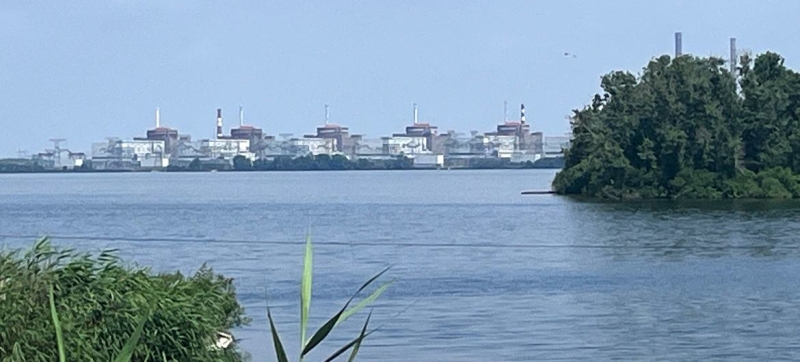
ZNPP is one of the largest nuclear power plants in the world. IAEA: radiation monitoring station destroyed near ZNPP Peace and Security
The International Atomic Energy Agency (IAEA) has received information from the Zaporozhye Nuclear Power Plant (ZNPP) that an external radiation monitoring station was destroyed by shelling and fire this week, further reducing the ability to detect a radioactive release in the event of an emergency.
As IAEA Director General Rafael Mariano Grossi reported on Friday, Zaporizhia NPP personnel lost contact with the monitoring station on Monday afternoon. Due to the difficult security situation, a team of experts was unable to get to the site to confirm the damage.
Loss of monitoring stations
Since the beginning of 2022, due to damage resulting from the conflict, several radiation monitoring stations in the 30-kilometer zone around the Zaporizhzhya Nuclear Power Plant have been out of service for various periods of time. Currently, four stations out of 14 that operated before the start of the war are unavailable. erosion of a number of safety measures during war, which causes deep concern,” the head of the IAEA emphasized, recalling that radiation control is one of the seven mandatory components of ensuring nuclear safety during an armed conflict.
Ukraine is one of 51 countries participating in the IAEA’s International Radiation Monitoring System, which collects data from more than six thousand monitoring stations around the world.
Emergency cooling of reactors
During the conflict, Zaporizhia NPP continues to face other problems related to ensuring nuclear safety. Throughout the past week, IAEA experts heard explosions some distance from the plant.
The IAEA team continues to closely monitor the water cooling situation – a year after the collapse of the Kakhovka Dam forced to look for alternative sources needed to cool six reactors. As part of this effort, 11 wells were dug last year and are now providing sufficient water supply.
“With all six reactors shut down, there is enough water from the wells for cooling , but the situation remains complex and requires constant monitoring and analysis,” noted Grossi.
Situation at other nuclear power plants
Scheduled maintenance and refueling work continues at two of the three power units of the South Ukrainian NPP and one of the four power units of the Rivne NPP. IAEA experts at the Chernobyl site were safely replaced by a new team late last week.
As part of the IAEA’s efforts to support Ukraine in ensuring nuclear safety during armed conflict, the agency this week organized two new supplies of equipment.
